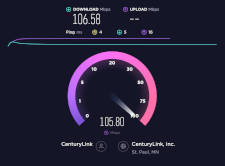Broadband
Broadband refers to high-speed data transmission over a single cable, carrying a large amount of data across multiple signals simultaneously. It commonly refers to a high-bandwidth, always-on Internet connection. The most common types of broadband connections are DSL, cable, fiber, and mobile wireless.
Different countries have different standards for what is considered broadband. It generally applies to any Internet connection that is both faster than dial-up or ISDN and is always connected. The speed at which an Internet connection is deemed broadband changes over time as technology improves. For example, the US FCC once considered a connection that offered 4 Mbps download / 1 Mbps upload to be broadband before later updating their standards to 25 Mbps down / 3 Mbps up.
Types of Broadband Internet
Several different types of broadband Internet connection are commonly available. Some require dedicated lines and only operate in tight geographic areas, while others are more widely available. Speeds, prices, and the quality of service can vary greatly based on the type of connection.
- Digital Subscriber Line, or DSL, is a type of broadband connection that operates over telephone lines. A DSL line's speed depends on several factors — the quality of the line, the number of other customers in an area, and the distance between the customer and the ISP. Typical speeds range from 1-5 Mbps on the low end up to 100 Mbps.
- Cable Internet operates over coaxial cables originally designed for cable television service. Like DSL, a high number of customers in an area can result in a slower speed for everyone, so many cable ISPs implement monthly data caps to limit usage. Speeds range from 30-100 Mbps on the low end to more than 1 Gbps.
- Fiber Internet service runs over dedicated fiber optic cables. Fiber networks are not as affected by local network traffic as DSL and cable, so most fiber connections are uncapped and offer symmetrical download and upload speeds. Fiber's availability requires the local ISP to run new lines, so it is more geographically limited than options that use the existing phone and cable lines. Fiber Internet speeds range from 100 Mbps on the low end up to 2 Gbps.
- Wireless Internet can run over normal cellular networks or a fixed wireless connection. Customers of 4G and 5G mobile carriers can use dedicated hotspots or their own mobile phones to connect their homes to the Internet. Fixed wireless uses lower frequencies that travel from the ISP's radio tower to a dedicated outdoor radio receiver. Connection quality depends on the type of service, the signal strength, and whether there is a clear line of sight to the tower. Speeds range from 5-10 Mbps up to 1 to 2 Gbps.
- Satellite Internet is delivered from satellites in orbit to a dish or receiver mounted outside of a home. Since a signal has to travel to orbit and back, satellite Internet has higher latency than other types of broadband. It is generally more expensive than wired connections but can operate nearly anywhere. Satellite signals also require a line of sight to the sky and can suffer from interference caused by trees and weather conditions. Speeds range from around 10 Mbps up to 500 Mpbs.
 Test Your Knowledge
Test Your Knowledge